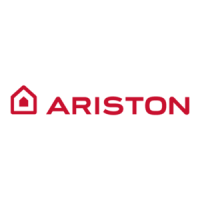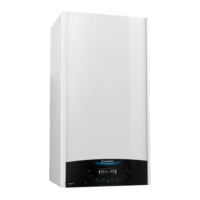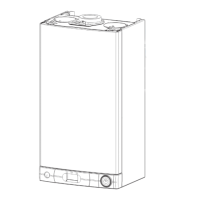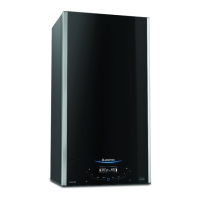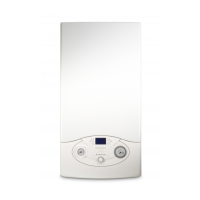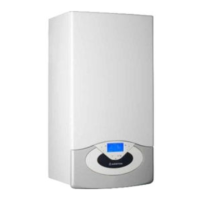RESIDUAL HEAD OF THE BOILER ∆T20°C
FIG. 2.6
2.8. WATER CONNECTIONS
Legend:
A = Central Heating Flow
B = Domestic Hot Water Outlet
C = Gas Inlet
D = Domestic Cold Water Inlet
E = Central Heating Return
H = Condensate discharge
I = Safety valve discharge
J = Drain valve
Central Heating
Detailed recommendations are given in BS 6798:2000 and BS
5449-1:1990, the following notes are given for general guidance.
PIPE WORK:
Copper tubing to BS EN 1057:1996 is recommended for
water pipes. Jointing should be either with capillary soldered
or compression fittings.
Where possible pipes should have a gradient to ensure air is
carried naturally to air release points and water flows
naturally to drain taps.
The appliance has a built-in automatic air release valve, however
it should be ensured as far as possible that the appliance heat
exchanger is not a natural collecting point for air.
Except where providing useful heat, pipes should be
insulated to prevent heat loss and avoid freezing.
Particular attention should be paid to pipes passing through
ventilated spaces in roofs and under floors.
BY-PASS:
The appliance includes an automatic by-pass valve, which
protects the main heat exchanger in case of reduced or
interrupted water circulation through the heating system, due
to the closing of thermostatic valves or cock-type valves
within the system.
SYSTEM DESIGN:
This boiler is suitable only for sealed systems.
DRAIN COCKS:
These must be located in accessible positions to permit the
draining of the whole system. The taps must be at least
15mm nominal size and manufactured in accordance with BS
2870:1980.
SAFETY VALVE DISCHARGE:
The discharge should terminate facing downwards on the
exterior of the building in a position where discharging
(possibly boiling water & steam) will not create danger or
nuisance, but in an easily visible position, and not cause
damage to electrical components and wiring.
The discharge must not be over an entrance or a window or
any other type of public access.
CONDENSATE DISCHARGE:
A flexible hose is supplied for connection to the condensate
discharge point
H (Fig. 2.5). The condensate discharge hose
from the boiler must have a continuous fall of 2.5° and must
be inserted by at least 50 mm into a suitable acid resistant
pipe - e.g. plastic waste or overflow pipe. The condensate
discharge pipe must have a continuous fall and preferably be
installed and terminated within the building to prevent
freezing.
NOTE:THE FLEXIBLE CONDENSE HOSE SUPPLIED WITH THE
APPLIANCE CAN BE EXTENDED BY PULLING THE TUBE OPENING THE
RIBBED PIPE.
VIEW OF THE BOILER CONNECTIONS
A
CB
D
E
H
I
J
A
C E
H
I
J
FIG. 2.5
27/32 MFFI (COMBI)
27/32 RFFI (SYSTEM)
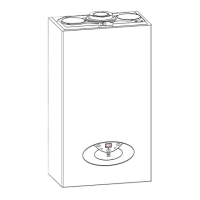
